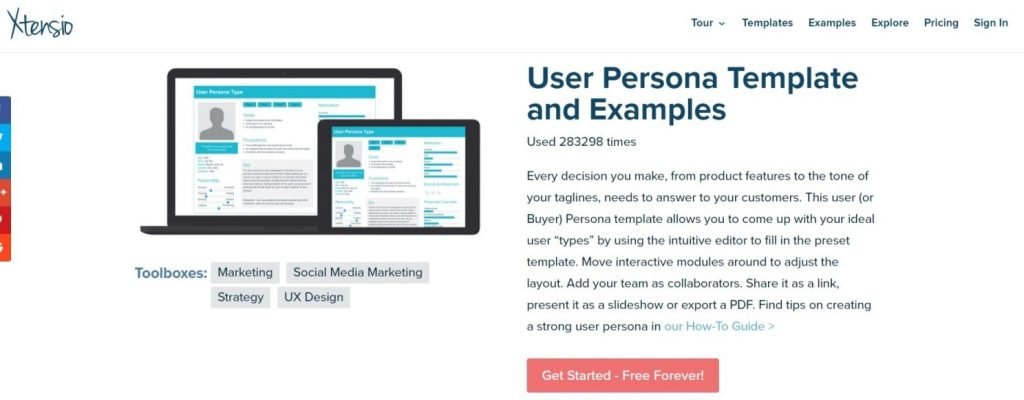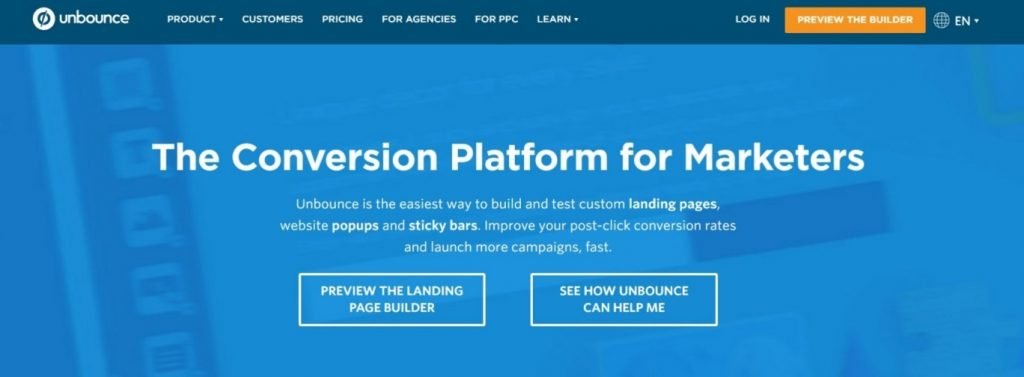An Introduction to Sales Funnels and How to Use Them On Your eCommerce Website

The goal of any eCommerce merchant is to increase the number of sales they make, but this can be a difficult task without a strategy in place. This is where sales funnels – an advanced marketing technique – comes in.
Sales funnels are defined buying processes that merchants can use to guide their potential leads through the process. And they can be a great thing to have if you’re also looking to increase Search Engine Results Page (SERP) rankings and improve your site’s established customer journey.
In this post, we’ll introduce sales funnels and their most common uses. We’ll then outline the steps necessary to set up a successful sales funnel from start to finish. Let’s get started!
An Introduction to Sales Funnels
A sales funnel, also known as a revenue funnel, is the buying process that companies use to guide qualified leads towards the end goal of making a purchase.
There are several variations of the stages of a sales funnel, though one of the simpler models includes five. They are:
- Awareness
- Interest
- Evaluation
- Engagement
- Commitment/conversion
The most common uses of sales funnels.
And while we mentioned above that sales funnels are most often used to encourage customers to make a purchase, they do have their place in non-eCommerce settings. For example, you can use them to get website visitors to:
- Provide an email address
- Sign up for beta testing
- Connect with you on social media
In other words, they’re an excellent way to get visitors to convert even if a purchase isn’t your end goal.
How to Set Up an Effective Sales Funnel On Your eCommerce Website (In 6 Steps)
These steps will help you to create a sales funnel from start to finish. Now, let’s jump in!
Step 1: Identify and Research Your Ideal Buyer
Before you even begin to create a sales funnel, it’s crucial that you know who your ideal buyer is and what they want/need from you. This will require a bit of research.
The easiest way to do this is by creating a buyer persona.
A buyer persona is a representation of your ideal customer that will be created through market research and data from your existing customers. You’ll want to include as many details about this customer as possible, including demographics, behaviors, and goals.
If you’re not sure where to get started, consider asking a few of these questions.
You can then begin to build a fuller picture of your buyer so you can better understand how your products and services meet their needs, and which of their pain points you can target.

Tools like Xtensio provide a free template (and examples) to get started creating your buyer persona.
After all, 70% of purchase decisions are made to solve a specific problem.
However, the above is just the start.
You will want to create multiple personas, as well as refine them when more information (such as market research and user data) become available.
Step 2: Set Up (and Implement) Lead-Generating Marketing Campaigns
With your target customers now in mind, it’s time to set up marketing campaigns that will bring awareness of your product/service to your potential leads.
This is perhaps one of the most time-consuming steps but, fortunately, there are many software products that enable you to automate the process or at least make it less difficult.
For example, Ahrefs is a suite of tools that enables you to grow your website’s search traffic. It will help you to learn the most effective keywords for your campaigns, audit and rank your website for traffic statistics, and it can even compare your website to your competitors’.
Other tools that provide offerings along the same lines include SEMRush, Serpstat, and Optimizely.
Your next task will then be to apply this information to your current marketing campaigns to improve the odds of bringing in more qualified leads.
By narrowing the focus of your marketing campaigns, you can be sure to bring in leads who are more likely to convert.
So, which campaigns should you refocus?
These include any search engine and social media campaigns, as well as your current content strategy and email marketing.
You want to focus your new campaigns on the keywords and other data that you’ve collected using the tools above, and then continue to track and optimize them as time goes on.
You can also implement new campaigns. These may include link building, guest posting, and influencer marketing.
Step 3: Create a Killer Landing Page
Once you’re brought awareness of your website to your best potential leads, it’s time to capture their interest. One ways to do so is with the creation of a product- or service-specific landing page.
A landing page is a page with a singular purpose – to convince readers to purchase your product or service, or to convert in another way such as joining your email list.
There are various elements of a killer landing page, including headlines, benefits, social proof, and Call-To-Action (CTA) buttons.
But how can you know which headlines will work best, or which CTA buttons are most convincing? Fortunately, tools such as Unbounce and Optimizely exist for this very reason.

Tools such as Unbounce can guide you through the landing page creation process.
These two Software-as-a-Service (SaaS) tools enable you to test various iterations of your landing pages to see which ones are most effective with your target audience.
This is known as split testing, and it’s an excellent way to learn how users connect with your website in realtime.
And even if you aren’t a professional when it comes to WordPress (or whichever platform you use), there are also tools which make it possible to create a landing page in just a few minutes.
Elementor, for example, enables WordPress users to drag-and-drop their way to a powerful and aesthetically-pleasing page. You don’t need any prior knowledge, or any experience with coding.
Step 4: Provide an Introductory Offer
You’ve got the customer’s attention, but now it’s time to make them seriously consider what you have to offer.
One way to do so is with an introductory offer.
Just as it sounds, an introductory offer is a slight taste of the what the full conversion will provide them. It can be a video or webinar invitation, a guide, or even a white paper.
The goal is to help your customer through the evaluation stage by answering a few questions about your product/service and showing them just how qualified you are.

Louder.online offers an easy-to-retrieve introductory offer which also provides the company with a user’s website URL and email address.
Here is where you can ask for them to take the next step, such as providing their email address or signing up for a free account. There is minimal risk for them to do so and, as it only takes a few seconds, the most qualified leads will be likely to acquiesce.
You can then use this information to contact them, of course, but also to keep track of their behaviors and actions so as to better meet their needs.
You can even turn this into a future chance of engagement (which we’ll discuss further below) with Customer Relationship Management (CRM) tools like FunnelCRM and Salesy.
These tools provide a platform that enables you to collect user data and reach out to customers at the opportune time. This is a critical point in the sales funnel and, because of this, customer retention must be your focus.
Step 5: Create a Chance for Customer Engagement
Relationships are the foundation of any effective sales funnel, and now it’s up to you to engage with your potential leads just as they’re about to make their final decision.
This will require the data you’ve collected in previous steps (such as demographics, behaviors, and contact information) to make the right move.
An easy way to engage your customers is via email newsletter. There are even tools which help you to automate the process so you can be sure you reach out at exactly the right time to increase the odds of your customer converting.
Tools such as Insightly utilize workflow automation to speed up the conversion process, and it also provides critical insights that can strengthen your relationships with your customers.
But other ways to engage with your customers do exist.
For example, a live chat box on your landing page can be used to encourage visitors to ask questions and raise their concerns.
You can man these chat boxes yourself, or you can use chatbots which utilize Artificial Intelligence (AI) to personalize the experience and offer 24/7 support to your leads.
At this stage in the funnel, you may also find it effective to offer a discount to your potential leads. This is especially true if the shopping cart has been abandoned, as 54% of customers will complete the sale if a discount price is offered.
Step 6: Make It Easy for Customers to Take Action
It’s finally time for your potential lead to convert into a full-fledged customer. But one major setback to so many online businesses is the hoops they require their customers to jump through.
Even when the desire is there and the customer has committed to making a purchase, there is room for second thoughts. And while the majority of buyers who have reached this stage are unlikely to experience such doubts, it’s important to remember the easier you make it for your customers to take action the more likely they will be to do so.
Some common mistakes made at this stage include:
- Complicated signup/signin processes
- Too many form fields
- Too many steps between ‘Add to Cart’ and checkout
Fortunately, there are easy fixes.
Did you know that 23% of customers will abandon a cart if they’re required to make an account?
One easy fix is to make it possible for new customers to sign up for an account using their Facebook or Gmail login. Or, you can enable customers to make a purchase as a guest.
You can also reduce the number of form fields to only what is required – name, email address, and shipping/billing address.
In fact, reducing form fields from the standard 11 to 4 can increase conversion rate by 120%!
There also exists tools that let your customers pay for products without entering their credit card numbers. For example, you can easily add a PayPal payment option such as PayPal Payments Pro to your site which enables customers to checkout securely and with just a few clicks.
It’s important to remove all obstacles and inconveniences so as to speed the process and create an enjoyable user experience.
Conclusion
As an eCommerce merchant, it is your job to guide potential leads through the sales process in as simple and pain-free a way as possible. One of the easiest ways to do so is with the use of a sales funnel.
Do you have questions about sales funnels, or how to use them on your eCommerce website? Let us know in the comments section below!

Leave a Reply